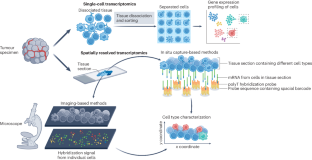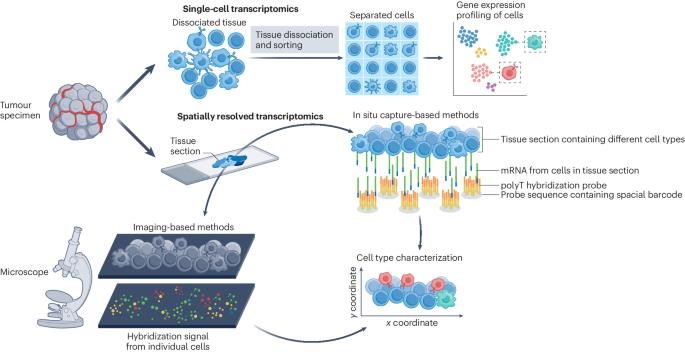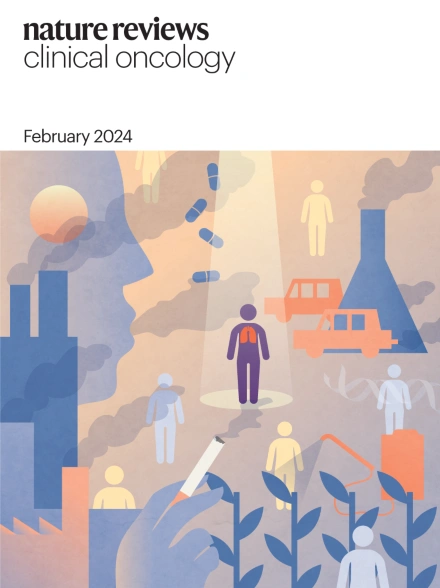癌症的空间景观:见解与机遇。
IF 81.1
1区 医学
Q1 ONCOLOGY
引用次数: 0
摘要
实体瘤由许多不同类型的细胞组成,呈空间结构排列,瘤内和瘤间异质性很大。过去十年来,空间剖析技术取得了长足进步,有望捕捉到这些细胞结构的复杂性,从而建立起塑造肿瘤生态系统的复杂分子机制的整体视图。其中一些机制在细胞尺度上发挥作用,由细胞自主程序或邻近细胞之间的通讯控制,而其他机制则是由组织和器官组成的细胞和细胞外分子大网络之间协调努力的结果。在本综述中,我们将深入探讨单细胞和空间剖析工具的应用,重点介绍为了解肿瘤微环境的细胞结构而开发的空间解析转录组学工具,并确定利用这些工具改善癌症临床管理的机会。本文章由计算机程序翻译,如有差异,请以英文原文为准。


Spatial landscapes of cancers: insights and opportunities
Solid tumours comprise many different cell types organized in spatially structured arrangements, with substantial intratumour and intertumour heterogeneity. Advances in spatial profiling technologies over the past decade hold promise to capture the complexity of these cellular architectures to build a holistic view of the intricate molecular mechanisms that shape the tumour ecosystem. Some of these mechanisms act at the cellular scale and are controlled by cell-autonomous programmes or communication between nearby cells, whereas other mechanisms result from coordinated efforts between large networks of cells and extracellular molecules organized into tissues and organs. In this Review we provide insights into the application of single-cell and spatial profiling tools, with a focus on spatially resolved transcriptomic tools developed to understand the cellular architecture of the tumour microenvironment and identify opportunities to use them to improve clinical management of cancers. Solid tumours are complex ecosystems comprising many different cell types with spatially structured arrangement. The authors of the Review describe how single-cell and spatial profiling tools have been applied to understand the cellular architecture of the tumour microenvironment. These approaches have potential to improve the way cancer is diagnosed and treated.
求助全文
通过发布文献求助,成功后即可免费获取论文全文。
去求助
来源期刊
CiteScore
99.40
自引率
0.40%
发文量
114
审稿时长
6-12 weeks
期刊介绍:
Nature Reviews publishes clinical content authored by internationally renowned clinical academics and researchers, catering to readers in the medical sciences at postgraduate levels and beyond. Although targeted at practicing doctors, researchers, and academics within specific specialties, the aim is to ensure accessibility for readers across various medical disciplines. The journal features in-depth Reviews offering authoritative and current information, contextualizing topics within the history and development of a field. Perspectives, News & Views articles, and the Research Highlights section provide topical discussions, opinions, and filtered primary research from diverse medical journals.

 求助内容:
求助内容: 应助结果提醒方式:
应助结果提醒方式:


